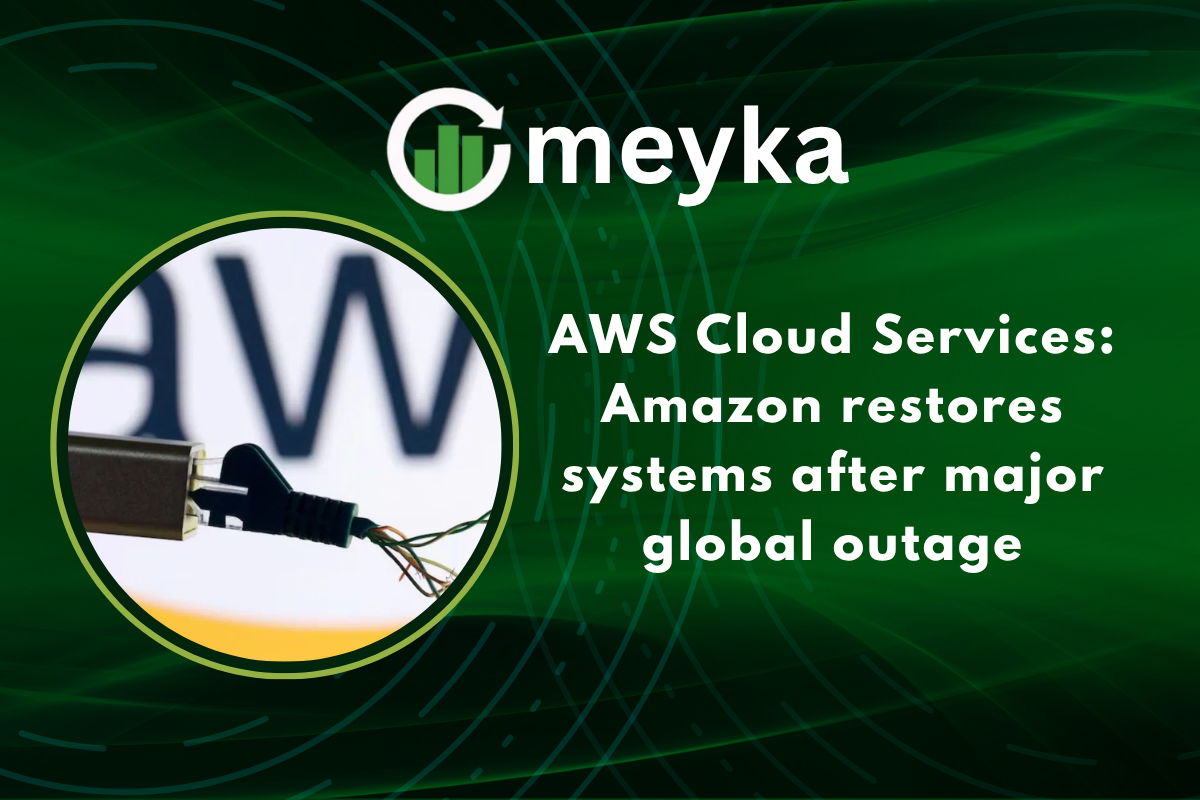AWS Cloud Services: Amazon restores systems after major global outage
A major global outage knocked dozens of popular websites and apps offline on Monday, but AWS Cloud Services were largely restored by late afternoon after engineers fixed the problem, Amazon said.
The disruption hit services from streaming and gaming to banking and logistics, affecting millions of users and thousands of businesses across the United States, Europe, and beyond.
The incident exposed how deeply Amazon Web Services underpins the modern internet, and it has reignited debate about resilience and multi cloud strategies for companies in Seattle, New York, and worldwide markets.
Why did one provider’s trouble ripple across so much of the internet?
AWS Cloud Services Disruption Hits Global Platforms
The outage and its immediate impact
The outage began in the US-EAST-1 region in northern Virginia and quickly affected essential systems like EC2 and S3, tools many apps rely on for compute, storage, and routing. Major consumer apps including Snapchat, Reddit, and several streaming services reported interruptions, as did some financial and retail systems that use AWS for transaction processing.
The scale was clear on real time trackers and social media feeds as users around the world reported problems
Why did so many apps go offline at once? Because many companies depend on the same AWS building blocks, a failure in core network or routing systems can cascade across many services at the same time.
Cause and early findings
Amazon’s initial investigation pointed to a configuration error during a system update that impacted internal monitoring of network load balancers. That misconfiguration triggered cascading failures and slowed the usual automated recovery steps.
AWS engineers worked through the night to mitigate the issue and restore services. Al Jazeera and Reuters reported that network congestion and the US-EAST-1 cluster’s central role made recovery more complex than a simple restart.
Could this have been prevented? Experts say strong automation and robust rollback plans help, but when monitoring or routing systems fail, even backups can struggle. The outage highlights the limits of automation when a core subsystem is impaired.
How Long Did the Outage Last and Who Was Affected?
Duration and sectors hit
The outage lasted several hours for many users, with partial services returning sooner and some customers facing backlog processing for longer. Retail checkouts, streaming access, real time trading feeds, and logistics tracking were among the most visible impacts.
News outlets reported that millions of user incidents were logged, and over a thousand companies reported interruptions to business functions. For many enterprises even a few hours of downtime can mean large revenue and operational losses.
Amazon’s Response and System Recovery
Rapid remediation and commitments
Amazon updated its status pages and issued statements saying core services were restored and that engineering teams continued to monitor residual issues. Reuters quoted Amazon acknowledging the disruption, apologizing to customers, and promising a detailed post incident analysis.
The company said it would publish more information on the root cause and the fixes applied. CNBC and CBC coverage noted AWS teams worked round the clock to mitigate the incident and help customers recover backlog tasks.
What does this mean for businesses? Restoration gets systems back online, but reputational damage, lost transactions, and delayed processing can take days to fully resolve for affected firms.
Why AWS Cloud Services Matter to the Internet
The cloud backbone and concentration risk
AWS Cloud Services power a large slice of the public internet ecosystem, providing hosting, databases, content delivery, and AI infrastructure. Industry data shows AWS holds a substantial share of the cloud market, and many start ups and large enterprises depend on it for mission critical workloads.
This concentration creates a single point of failure risk, prompting calls for multi cloud architectures and stronger regulatory scrutiny in sectors like banking and telecom.
Is the internet too dependent on AWS? Many analysts say yes, and they urge businesses to design redundancy across providers to limit the damage from single provider outages.
Expert Reactions and Industry Impact
Analysts weigh in
Tech analysts told CNBC and Reuters the outage will accelerate interest in multi cloud and hybrid strategies as firms look to reduce vendor concentration risk. Some also suggested reviewing service level agreements and backup procedures, because standard credits in SLAs rarely cover reputational harm or indirect losses.
The incident also came as investors were watching tech sector dynamics; AI Stock performance metrics remained under observation as markets digest operational risks tied to large cloud providers.
The Broader Lesson for Businesses and Cloud Dependence
Building resilience for digital operations
The outage is a wake up call. Enterprises should consider distributed architectures, better failover plans, and real time monitoring that can detect anomalies before they cascade. MLOps and AI powered observability tools can flag early warning signs and automate safer rollbacks, reducing the chance a single update leads to global outages.
AI Stock research also highlights how dependence on major cloud platforms can affect enterprise valuations and operational risk profiles.
Restoring trust in AWS Cloud Services
Amazon has pledged transparency and a full post incident report. Rebuilding trust will require clear remediation steps, improved rollback mechanics, and stronger customer communication.
As rivals like Microsoft Azure and Google Cloud continue to grow, some customers may accelerate moves to diversify infrastructure to protect critical services and maintain uptime across global markets.
AI Stock Analysis suggests investors will watch how cloud providers strengthen reliability and governance post outage.
Conclusion
AWS Cloud Services are back online after a severe global outage that highlighted both the power and fragility of modern cloud infrastructure. Amazon’s rapid response restored most systems, but the event underlines the systemic risks when large swathes of the internet run through a single provider.
For businesses in Seattle, New York, and around the world, the lesson is clear: build redundancy, test failover plans, and invest in real time monitoring.
As companies resume normal operations, AWS and its customers will be judged on how well they learn from this disruption and strengthen the internet’s backbone. The outage is over, but the resilience conversation is just beginning.
Disclaimer
This content is for informational purposes only and is not financial advice. Always conduct your research.






